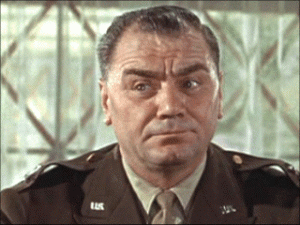A Lesson in Logic
Here we are, our final substitution rule, and the only one named after a person, rather than a function. Named after Augustus DeMorgan, this rule, which is actually two rolled into one, and can look a little tricky at first, but is really useful.
There are some statements that are really hard to pry apart, and that I haven’t dealt with for a while. Here’s one.
The queen is not a cat or a dog. ~(C ∨ D)
Notice that the negation is on the outside, so it’s not just negating C, it’s negating the whole disjunction. There’s no way to resolve that disjunction without first getting rid of that negation, and that’s what DeMorgan’s let’s you do, turning that into this:
The queen is not a cat and the queen is not a dog. (~C ∧ ~D)
But wait, there’s more! DeMorgan’s also works the opposite way as well, changing this:
The queen is not a giraffe and a polo player. ~(G ∧ P)
Into this:
The queen is not a giraffe or the queen is not a polo player. (~G ∨ ~P)
So once you’ve done the transformation, you can try to break them down further using simplification (for the first instance) or a disjunctive syllogism (for the second). Sometimes you’ll run into conditionals which require the original forms, in which case you can sometimes create the right one using DeMorgan’s along with conjunction or addition.
Now, when I hunted for news for today’s proof, I found out that Ernest Borgnine had died. I met him once, and he seemed like a really nice guy. I also love a lot of his work, and got to watch him try to explain to a kid at a con that if he signed the plastic of the  kid’s board game, the signature would be gone when the kid opened the game, responding to the young man’s statement of “I’m not going to open the game ever” with “Well, why’d you buy it then?” Ernest Borgnine was, from my observations, an eminently practical man. I really liked him in the Dirty Dozen, with Lee Marvin. He played a General with a great smile and sense of humour, despite being surrounded by officers. At one point in the movie, the dozen are sent to capture a command post in a wargame, and the General happens to be there doing an inspection. He clearly recognizes the men, but just smiles and doesn’t give the game away, but also doesn’t stick around and let them capture him. There are limits, after all. Here’s a proof of those events.
kid’s board game, the signature would be gone when the kid opened the game, responding to the young man’s statement of “I’m not going to open the game ever” with “Well, why’d you buy it then?” Ernest Borgnine was, from my observations, an eminently practical man. I really liked him in the Dirty Dozen, with Lee Marvin. He played a General with a great smile and sense of humour, despite being surrounded by officers. At one point in the movie, the dozen are sent to capture a command post in a wargame, and the General happens to be there doing an inspection. He clearly recognizes the men, but just smiles and doesn’t give the game away, but also doesn’t stick around and let them capture him. There are limits, after all. Here’s a proof of those events.
1. He does not give them away or stay to be captured. ~(G ∨ S)
2. If he doesn’t give them away, then they will be victorious. (~G → V)
3. They are victorious. (V)
Proof:
4. He does not give them away and he does not stay to be captured. (~G ∧ ~S), DeMorgan’s from 1.
5. He does not give them away. (~G), Simplification from 4.
6. They are victorious. (V), Modus Ponens from 2 and 5.
And that’s it. That’s DeMorgan’s, the last substitution rule. Not to worry though, there’s plenty of other parts of logic to learn, starting with argumentative fallacies. I might even try to include some more proofs for you to do. Comment or tweet me to let me know!
